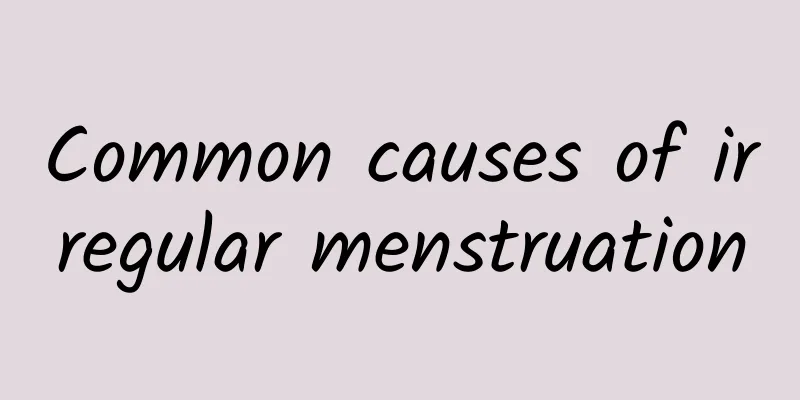What exercises can improve uterine fibroids?

|
Moderate exercise can have a positive impact on uterine fibroids by regulating hormone levels, promoting blood circulation and improving immune function. Suitable exercises include 1) yoga, 2) moderate to low intensity aerobic exercise such as brisk walking and swimming, and 3) stretching training for the core area. These exercises are helpful in improving the symptoms of uterine fibroids and maintaining overall health, but they should be combined with one's own situation and avoid excessive exercise. 1. Yoga Yoga, as a form of aerobic and static exercise, can help alleviate the impact of female hormone fluctuations on uterine fibroids. Deep breathing can regulate endocrine function, while enhancing body flexibility and promoting blood circulation around the uterus. Some specific yoga postures such as "bound angle pose" or "cat-cow pose" can relieve waist and abdominal pain caused by uterine fibroids and help soothe the body and mind. However, when doing yoga, you should avoid movements that put strong pressure on the abdomen, such as handstand poses. 2. Moderate to low intensity aerobic exercise Brisk walking and swimming are very suitable low- to medium-intensity exercises for patients with uterine fibroids. Brisk walking can promote metabolic balance in the body and reduce the risk of excessive estrogen secretion by increasing heart rate and enhancing the activity of the circulatory system, thereby slowing down the growth rate of uterine fibroids. Swimming can comprehensively improve muscle strength and relieve muscle tension through whole-body coordinated exercise. It is recommended to do it 3-5 times a week, about 30 minutes each time, mainly for comfort. 3. Core stretching Core stretching is an important exercise for training deep muscles and pelvic floor support. For example, the "bridge" exercise in Pilates can gently train the pelvic area, improve support capabilities, and enhance the overall stability of women's muscles, thereby reducing waist and back compression or muscle fatigue caused by uterine fibroids. However, it must be completed under the guidance of a professional coach to avoid physical discomfort caused by excessive stretching. Kind tips Although exercise can improve uterine fibroids to a certain extent, it is not the only or fundamental treatment. If accompanied by severe pain, irregular menstruation or obvious compression symptoms, you should consult a doctor in time. Exercise combined with reasonable diet adjustment and regular treatment (such as drug therapy or surgical intervention) can achieve better improvement results. Patients with uterine fibroids need to do what they can, choose a suitable exercise method, adhere to regular exercise, and avoid the negative effects of excessive intensity. |
<<: Can endometrial cysts become cancerous?
>>: Can I take birth control pills if I have dysmenorrhea and cold uterus?
Recommend
What should I do if my leucorrhea is always a little yellow a week before my period?
What should I do if my leucorrhea is always a lit...
Ectopic pregnancy is usually the main form of care
Among the many gynecological diseases, ectopic pr...
7 yoga leg stretches to get thin and straight legs!
[Core Tip]: How to reduce leg muscles? Teach you ...
Can I have sex if I haven't had my period 37 days after the abortion?
Abortion refers to artificial abortion. If menstr...
Is it okay not to do a gynecological examination before abortion? You should know these gynecological common sense before abortion
Normally, there are many bacteria in the vagina, ...
shock! Eating all-you-can-eat hotpot = gaining 0.3 kg
With the arrival of the cold wave, hot pot has be...
Can ultrasound treat ovarian cysts?
Surgery is the most common treatment for ovarian ...
Analysis of methods to prevent irregular menstruation
Irregular menstruation is a problem faced by many...
Causes and manifestations of endometrial tuberculosis
We must actively grasp the cause of endometrial t...
Introduction to six common symptoms of uterine fibroids
Uterine fibroids are a common tumor that grows in...
Irregular life is the main cause of ovarian cysts
Before treating ovarian cysts, every patient must...
What are the diagnostic methods for cervical erosion?
Cervical erosion is a common manifestation of chr...
Can pelvic effusion cause fallopian tube obstruction?
There are six reasons why fallopian tubes are blo...
Is intramural uterine fibroids serious? What should I do if I have intramural uterine fibroids?
Intramural uterine fibroids are tumors that occur...
What are the specific causes of adnexitis?
Adnexitis is a common gynecological disease, and ...









